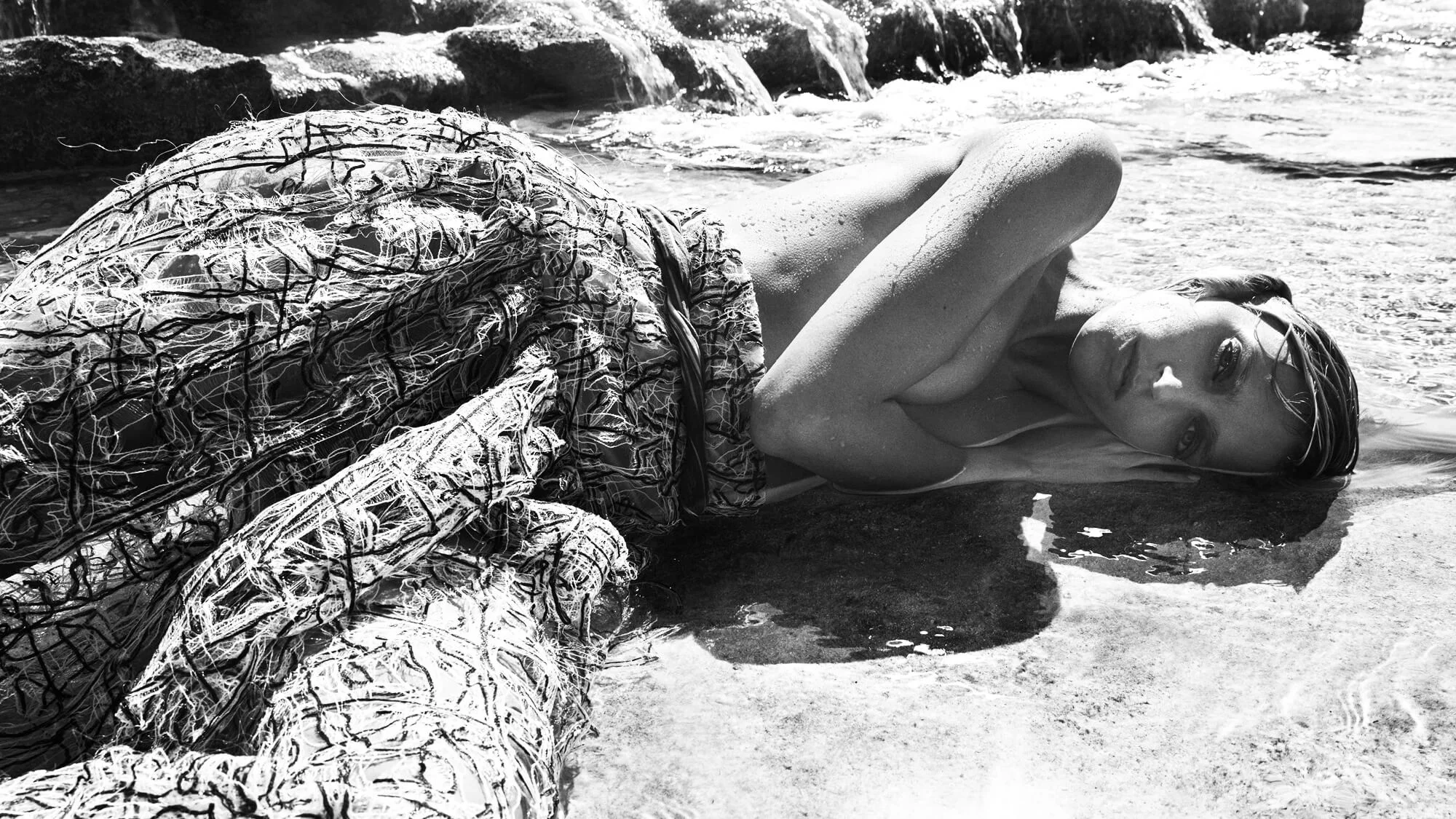Artist • Body Surfer • Creator of 20 limited-edition surfboard art pieces for Parley
German artist Katharina Grosse is best known for her paintings that use whole environments, landscapes, buildings or interior structures as their canvas. Color is what substantially determines her work. Its anarchic, energetic capacity unfolds in form of clouds, stripes, marbling, and mists of color spray-painted across spaces denying their boundaries. It exposes an additional dimension of reality: a pre-verbal articulation that arises from physical experience, movement and perception.
Header photo and here: Katharina Grosse, Wunderbild, 2018 — National Gallery in Prague. Photo by Jens Ziehe
Surfboard detail for Parley
Born in Freiburg im Breisgau in 1961, Katharina Grosse studied at Kunstakademie Münster and Kunstakademie Düsseldorf. Her recent institutional exhibitions and in situ paintings include psychylustro, along the rail tracks of the city’s public transportation for Philadelphia Mural Arts Programme (2014); yes no why later at Garage Museum of Contemporary Art, Moscow (2015); Seven Hours, Eight Rooms, Three Trees at Museum Wiesbaden (2015); Untitled Trumpet for the 56th Biennale di Venezia (2015); Katharina Grosse at Museum Frieder Burda, Baden-Baden (2016); Rockaway on a derelict building in Fort Tilden, New York, for MoMA PS1 (2016); Asphalt Air and Hair in a public park for ARoS Triennial, Aarhus (2017); This Drove My Mother Up the Wall at South London Gallery (2017); The Horse Trotted Another Couple of Metres, Then It Stopped at Carriageworks, Sydney (2018); Wunderbild at National Gallery in Prague (2018/2019), Mumbling Mud at chi K11 art museum, Shanghai (2018/2019) and travelling to chi K11 art space, Guangzhou (2019) as well as currently Is it You? at Baltimore Museum of Art.
Her solo exhibition It Wasn’t Us at Hamburger Bahnhof – Museum für Gegenwart – Berlin will open as soon as current coronavirus restrictions allow. Grosse lives and works in Berlin and New Zealand. In 2019, she created a limited edition series of surfboard art pieces to support Parley’s Global Cleanup Network. Each unique piece is a surfable symbol for the oceans movement, and a call for creativity and change.
Q&A
You are a bodysurfer – how has this physical encounter shaped your relation to nature?
The water is so powerful. It is beautiful to be taken by a wave and spit out on the beach like a piece of driftwood.
Surfing could be seen as a mimetic activity that adapts to the sea instead of controlling it. In this sense, can your work also be understood as a kind of surfing over surfaces?
In a sense, yes. The beauty of my temporal outdoor pieces lies in the fact that the work process is intertwined with all sorts of influences such as the wind, the growth of nature, the fragility of the surfaces. I have to find an answer to each unforeseen change, which enriches everything. Unpredicted energy can also come from a team member or the institution. I like to see my work as a loose field of interdependent elements consisting of time, space, paint, machines, people and so on, on the constant search for alternatives.
To what extent can artists show us that another reality is conceivable and thus possible, or, from a different angle, what role can art and artists play in the environmental movement?
We can show alternatives to predominant systems, thoughts or ideas and thus make it make easier for us to adapt to change.
You try to avoid plastic in your everyday life as far as possible. Can you give a few examples of what you’ve changed?
The biggest thing apart from not buying products made of plastic or wrapped in it is how we handle our paints. We filter all our painting and mixed wastewater, i.e. the pigments and the binder’s residue get separated, dried and pressed into brick form. We apply this process wherever we work, on site, abroad or in the studio. Also, we’ve been experimenting with silica paints for outdoors and plastic-free binders for the studio work – and we reuse materials as often as we can. I see myself as a citizen with the responsibility to contribute to zero plastic and mindful use of resources.
Photo by Eric White
“I see myself as a citizen with the responsibility to contribute to zero plastic and mindful use of resources in general.”
– Katharina Grosse
More from the network


















